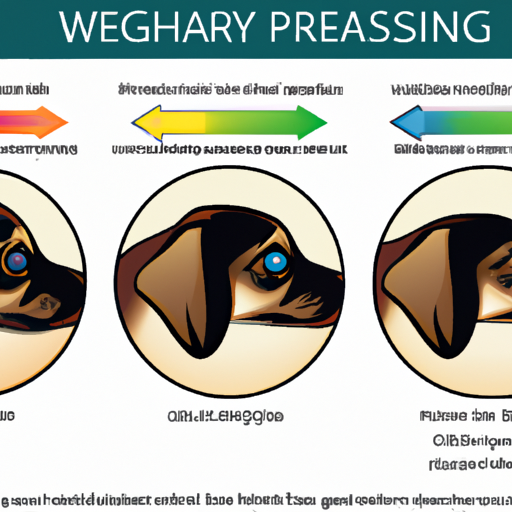Understanding PRA
Progressive Retinal Atrophy (PRA) is a group of genetic diseases that causes the degeneration of photoreceptor cells in your dog’s eyes. These cells are crucial to your dog’s ability to see both in daylight and in low light. As a caregiver, you might notice your dog bumping into furniture or being hesitant to go outside at night.
The Importance of Early Diagnosis
The onset of PRA can be gradual, making it difficult to detect in its early stages. However, early detection is crucial in managing the condition and preserving your dog’s quality of life. Typically, the first signs of PRA are night blindness and dilated pupils. As the disease progresses, the dog’s day vision will also begin to deteriorate.
If you notice any of these symptoms, it’s essential to consult a vet immediately. They can perform various tests, such as:
- Electroretinography (ERG): A diagnostic test that measures the electrical activity in the retina.
- Genetic testing: A test that can identify the genes responsible for PRA.
Breeds Prone to PRA
Certain breeds are more susceptible to PRA. Here’s a table to illustrate this:
| Breed | Type of PRA |
|---|---|
| Labrador Retriever | prcd-PRA |
| English and American Cocker Spaniel | prcd-PRA |
| Golden Retriever | GR-PRA1, GR-PRA2 |
| Yorkshire Terrier | rcd4-PRA |
Managing PRA
Unfortunately, there’s no cure for PRA. However, there are ways to manage the condition and ensure your dog’s comfort:
- Regular vet visits: Regular check-ups can help monitor the progression of the disease and adjust the care plan accordingly.
- Home adjustments: Create a safe environment for your dog. Avoid moving furniture around and keep their paths clear of obstacles.
- Diet and supplements: While there’s no definitive proof, some studies suggest that antioxidants and certain vitamins may slow the progression of PRA.
Breeding Considerations
If you’re a breeder, it’s essential to avoid breeding dogs carrying the PRA gene. Genetic testing can help identify carriers, thus preventing the spread of the disease in future generations.
Frequently Asked Questions (FAQs)
Q: Can PRA lead to complete blindness?
A: Yes, PRA can eventually cause complete blindness.
Q: Is PRA painful for my dog?
A: No, PRA itself is not painful. However, secondary conditions like glaucoma can cause discomfort.
Q: Can my dog still have a good quality of life with PRA?
A: Yes, with proper management and care, dogs with PRA can still live happy, fulfilling lives.
Q: Are there any treatments available for PRA?
A: Currently, there’s no cure for PRA. However, there’s ongoing research towards finding a possible treatment.
Q: How can I help my dog cope with PRA?
A: Regular vet visits, home adjustments, and a balanced diet can help manage PRA and improve your dog’s quality of life.



